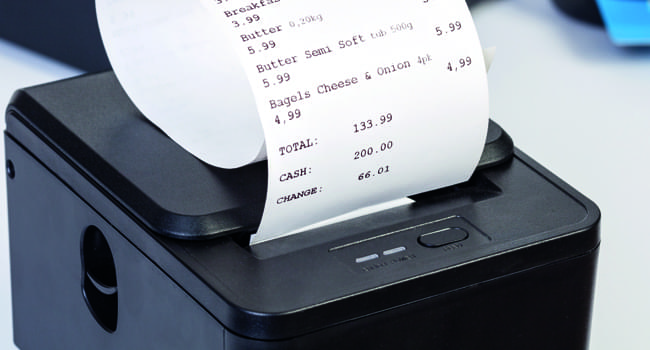LEATHERHEAD, Surrey, UK and AKRON, Ohio, USA – December, 01 2020 – The global demand for thermal print equipment and consumables (direct thermal, thermal transfer, and dye diffusion thermal transfer) will reach $34.11 billion in 2020 according to the projection in the latest dedicated Smithers study –
The Future of Thermal Printing to 2025.
This represents a drop of 6.2% compared to 2019 (at constant prices), as the industry and supply chains have reacted to the unprecedented disruption of the coronavirus pandemic.
The Q4 reimposition of lockdown orders in Europe and North America mean an immediate recovery is now unlikely, but the potential for effective vaccination programmes are giving a more positive outlook for 2021. With a true return to economic growth scheduled for H2 2021, and into 2022 in most instances, thermal print revenues will not regain their 2019 level until 2022.
Report author Steve Earley comments that: ‘
The slowdown is recoverable and is only due to the pandemic and not a lack of market need for this product. This report shows how verticals, regions, and products will recover from this pandemic and continue growing within a market that is still highly dependent on thermal printing and offers attractive growth opportunities.’
The impact will be most evident in industries most effected by lockdown orders – retail, transportation, and events & hospitality. In contrast, demand in healthcare and commercial services will rebound more quickly and are forecast for the fastest compound annual growth rates (CAGR) to 2025. Other sectors will see a return to stability and organic growth post-2022; with the overall market reaching $42.31 billion in 2025 at a mean CAGR of 4.4%.
Smithers’ systematic segmentation of thermal printing separates the market for printers, worth a projected $9.29 billion end-user prices/$6.32 billion OEM prices in 2020; and consumables worth $24.82 billion/$7.94 billion.
As growth returns, thermal print OEMs and consumable suppliers will face a combination of new and familiar challenges.
The ongoing trend to consolidation and vertical integration in thermal print supply, and in the label segment especially, will continue in the medium term. In mature economies, thermal print is nearing volume saturation in major applications. Genuine future growth will come from emerging and developing economies, especially in Asia; where China has the biggest potential market. Thermal print in these regions will benefit from the arrival of supermarket retailing displacing traditional markets.
The stimulus the pandemic has given e-commerce sales, will have a negative impact on conventional retail receipt printing. This will compensated for by a surge in use of thermal print labels for tracking and routing in direct-to-consumer delivery. In retail there remain unfulfilled opportunities for thermal printed media to create a link to the online world, via a QR code, for loyalty programmes, coupon codes. Simultaneously the greater preference for contactless payment is supporting new demand for mobile PoS printers.
Over the longer term the demand for more unique codes due to pharmaceutical track-and-trace mandates, like those US’s Drug Supply Chain Security Act (DSCSA) the EU’s Falsified Medicines Directive, will support wider use and permeate other product supply chains.
Continued concern over bisphenol-A (BPA) in PoS papers will continue to push demand for phenol-free grades in Europe and North America.
The impact of Covid-19 and other trends on future demand for thermal print equipment and consumables is analysed in depth in The Future of Thermal Printing to 2025. This includes a comprehensive data set segmented by:
- Printer type (Barcode; Mobile; Photo, including ID card; PoS/kiosk; Ticket & tag; Specialty)
- Consumable/media type (DT PoS receipts, DT ticket & tag, DT label, DT specialty, TT ribbon, TT label & tag, TT polymer tubing & tags, D2T2 ribbons & media)
- End-use application (Retail, Manufacturing, Transport, Healthcare, Commercial services, Entertainment & hospitality, Government)
- Geographic region (Asia-Pacific, North America, Latin America, Western Europe, Eastern Europe, Middle East & Africa).
